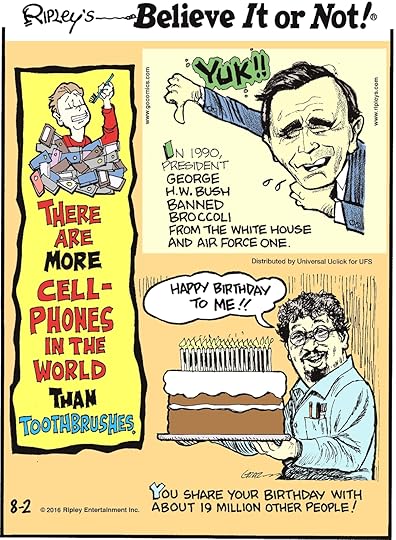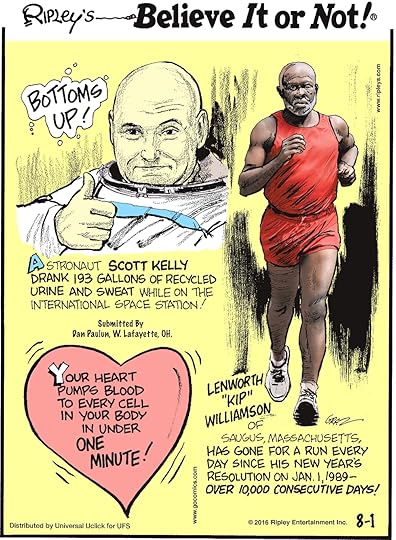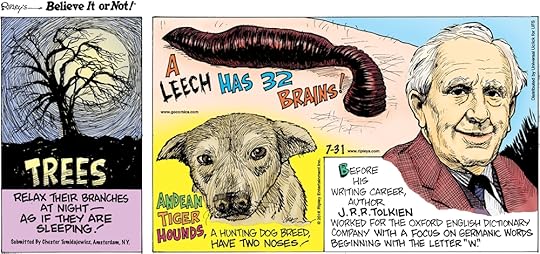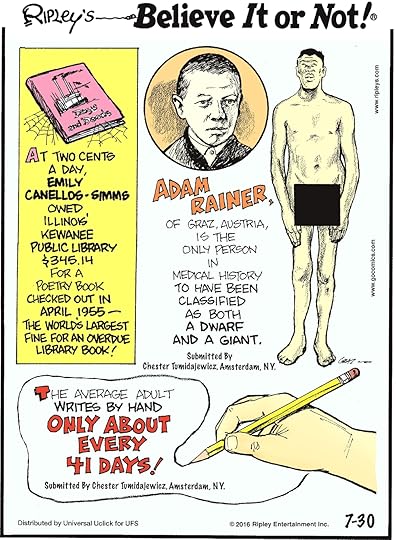Ripley Entertainment Inc.'s Blog, page 466
August 2, 2016
Cows Are Getting Eyes Painted on Their Butts in the i-cow Project
Featured in Ripley's Believe It or Not!
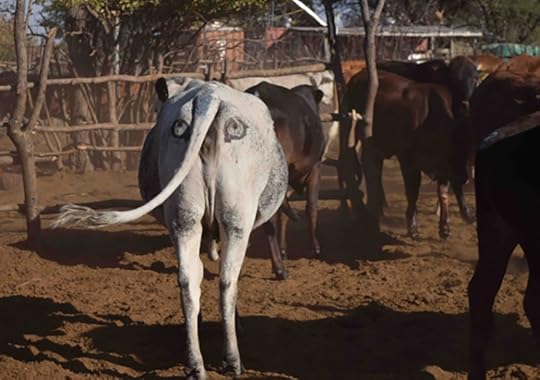
Any livestock farmer will be concerned with predation. When you make your living by raising animals, you have to worry about the possibility that other animals will kill and eat your product. This is as true in Botswana as it is in the U.S. However, the predators that farmers fear in Africa are lions instead of a single bobcat. In response to this problem, researchers with the University of New South Wales, Taronga Conservation Society Australia and Botswana Predator Conservation Trust are starting the i-cow project.
It’s not an iPhone app for cows. Instead, researcher Dr. Neil Jordan has a novel idea to stop lions in mid-hunt: painting intimidating eyes on the cows’ rumps.
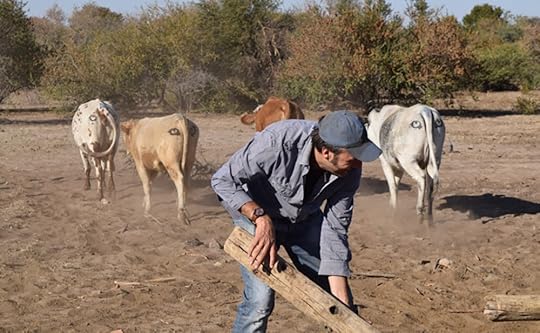
Via Dr. Neil Jordan
i-cow Project
Cattle farmers in Botswana have little to no recourse for when lions attack their livestock. To stop this from happening, the farmers often resort to lethal deterrents or deadly retaliation. As a result, the lion population has suffered. If i-cow is successful, we might see a world in which neither lions nor cow are harmed.
The idea behind the study is a simple one. Lions, like a lot of other big cats, are ambush hunters. Their tactics rely on them not being seen. While watching a lion hunting an impala, Dr. Jordan saw something odd: the impala spotted the lion.
And when the lion realised it had been spotted, it gave up on the hunt.
Dr. Jordan hopes that painting eyes on the cows will fool the lions into thinking they’ve been spotted. If his theory holds, then when the lions see the eyes, they should give up and go look for other game to hunt.
Early Results

Photo by Dikathola Kedikilwe
As silly as it may sound (and look), the early tests showed promising results.
Dr. Jordan and his team painted eyes on one-third of a herd of 62 cows. They then let the cows out to graze like normal and counted them when they came in for the night.
After 10-weeks, the results were promising. Three unpainted cows were killed by lions, but none of the painted cows were killed.
The sample size of the experiment was too small to draw any conclusions from on its own, but it was enough to convince people to fund a bigger study.
Dr. Jordan set up a request on the science study equivalent of GoFundMe, Experiment.com. He quickly made the money needed to fund his efforts, and now he’s heading back to Botswana to paint eyes on cow butts. It’s a dirty job, but someone has to do it.
Source: Cows Are Getting Eyes Painted on Their Butts in the i-cow Project
CARTOON 08-02-2016
August 1, 2016
The Mystery and Beauty of the Shell Grotto
Featured in Ripley's Believe It or Not!

Marvels of nature are a common occurrence. Scenes of both natural and man-made beauty are often found right in people’s backyards. With most of these places, the question of how and why they got here are easily answered – the Shell Grotto in Kent, UK, however, has murkier origins.

Located in Margate, Kent, the grotto is an intricate cave structure lined with 4.6 million seashells. The walls are all inlaid with unique and fascinating murals all made of shells. The shapes are purposeful and carry meaning, so it’s easy to see that they’re man-made.
But who made them and why?
The grotto was discovered around 1835 and the story of its discovery is shrouded in mystery.
One story claims that James Newlove lowered his son Joshua into a random hole that appeared in the ground when the family was putting in a duck pond. Joshua, who seemingly was not put off by the fact that his father decided to lower him into a strange hole in the earth, emerged with stories about tunnels covered in shells.
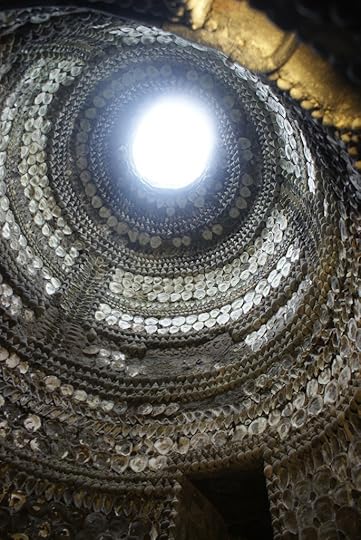
By Bruce Stokes via Flickr
A different story comes from Joshua’s sister, Fanny. She claims that Joshua found the grotto on his own while playing. He showed the mysterious place to her and some of their friends, and they used it as a secret clubhouse without telling any adults. When the grotto was officially discovered by the children’s father, the kids had known about it for years.
Whatever the truth, the fact still remains that no one knows why the place was constructed. One theory is that it was an ancient pagan temple, or the meeting place of a witch coven. In keeping with that idea, seances have been held in Shell Grotto.
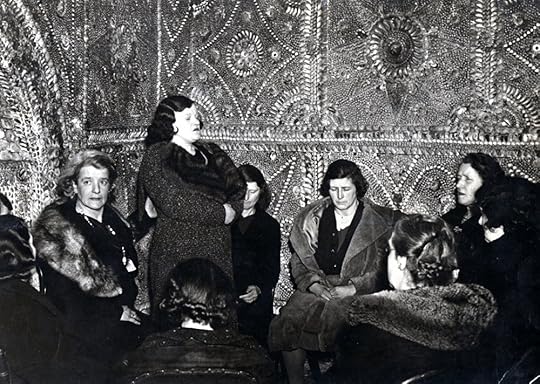
A Seance held in 1930
Others claim that it might have been a meeting place for a secret society or some cult.
Regardless of the reason for the grotto’s construction, the outcome is undeniably beautiful.
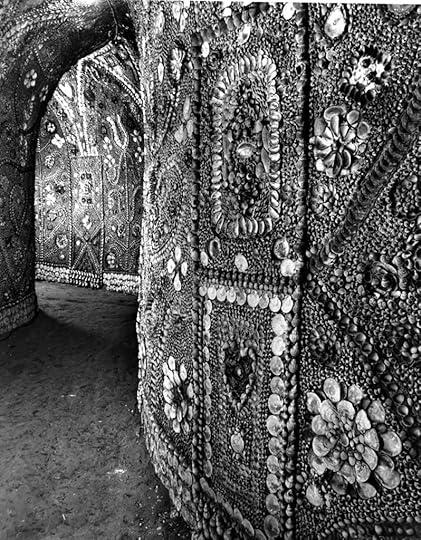
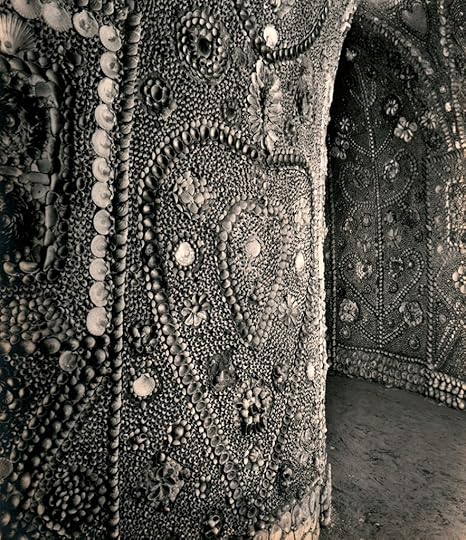
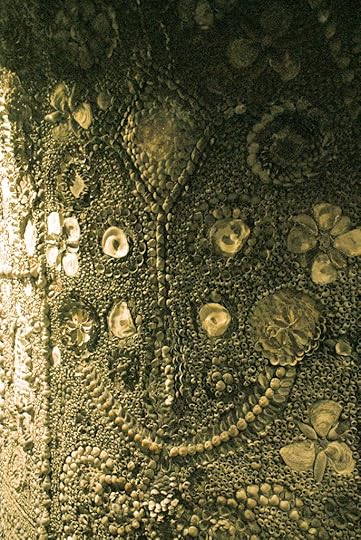
Happy Face Mural by Bruce Stokes via Flickr
Donkeys Providing Solar Power in Turkey
Featured in Ripley's Believe It or Not!
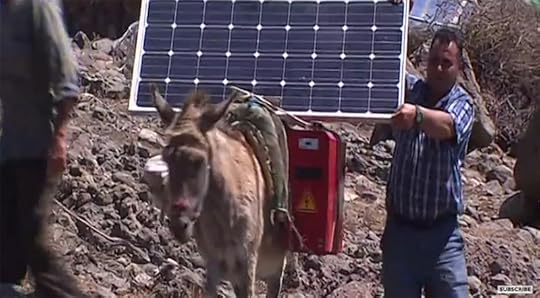
Sheep farmers in remote Turkish Hills are surfing the internet using solar-powered charging points attached to donkeys.
The charge points produce between five and seven kilowatts of electricity
That’s more than enough to charge a laptop
The shepherds live a very solitary life; the only socializing that they get comes from the Internet or watching TV
The charge points cost ₺2,800 Turkish liras, or $1,320
MINI BION
“BIONs” – short for Believe It or Not – is the word we use at Ripley’s to refer to anything that is unbelievable and worthy to become part of Ripley’s lore and collection.
CARTOON 08-01-2016
July 31, 2016
CARTOON 07-31-2016
July 30, 2016
CARTOON 07-30-2016
July 29, 2016
COLOMBIA HAUL! Zuly Sanguino, Limbless Artist – Miniatures Painted on Pins – PLUS MORE!
Featured in Ripley's Believe It or Not!
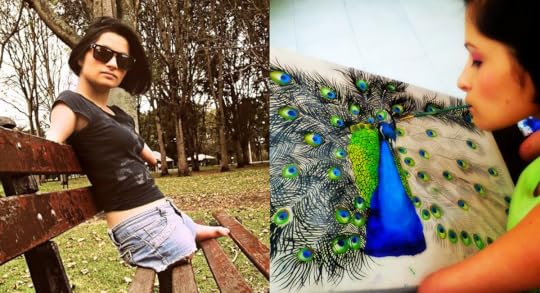
In This Episode
Last week we traveled to Thailand and danced with Khon theater. Today, we are headed to the Land of El Dorado—Colombia!
Today: Colombia Haul
Share & Subscribe
If you liked the show, please share it with your peeps. Remember to SUBSCRIBE to our channel to stay BION-informed!

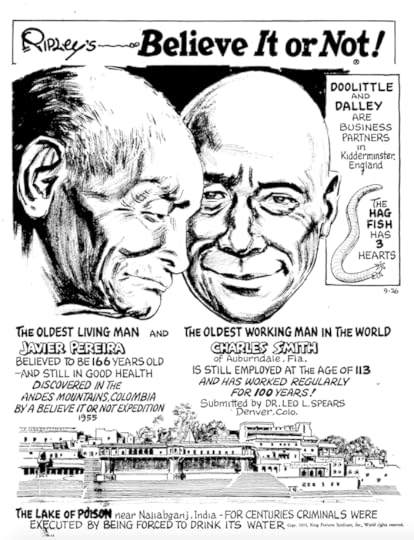
1955 Believe It or Not! cartoon
Robert Ripley was the most traveled man of his time, always on the hunt for unusual items to add to his collection, and his ramble around South America in 1925 may have been one of his most prolific! He even purchased his collection’s very first shrunken head on this trip!
On a later trip to Colombia, Ripley discovered one of his best best believe it or nots—Javier Pereira. Javier was believed to be 167 years old! The oldest man in the world.
THE OLDEST MAN LIVING, JAVIER PEREIRA, BELIEVED TO BE 166 YEARS OLD AND STILL IN GOOD HEALTH DISCOVERED IN THE ANDES MOUNTAINS COLOMBIA BY A BEIEVE IT OR NOT EXPEDITION 1955
Today’s unboxing takes a closer look at some of the items acquired on Ripley’s most recent trip to Colombia…
ZULY SANGUINO
Believe it or not, Zuly Sanguino of Bogota, Colombia, paints holding the paintbrush with her mouth. Zuly was born with Tetra-Amelia Syndrome, a very rare disorder characterized by the absence of all four limbs!
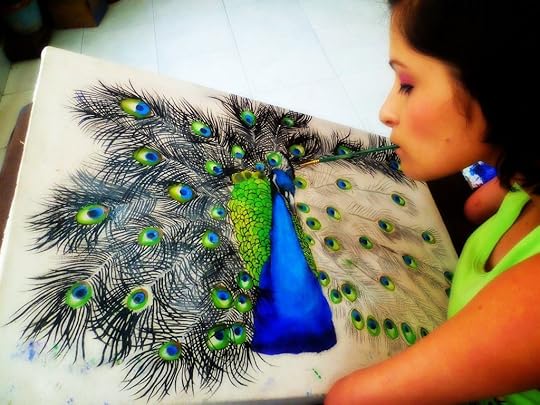
WERREGUE BASKETS
Werregue baskets are said to be woven so tightly that they do not leak water! The werregue is a type of palm tree and the handcrafts made from its fibers come from a small community in the rainy jungles of the Colombian pacific, in the delta of the San Juan River. It can take up to several months to make just one basket!
PINHEAD ART
Created by artist Ernesto Aviles Zambrano in the early 1950s, shortly before going insane and passing away, the heads of these pins hide a microscopic secret—skillfully painted portraits, landscapes and a few national symbols of Colombia. They were hidden away for decades before being discovered by Anna Mejia of Medellin, Colombia, who brought them to Ripley’s attention!
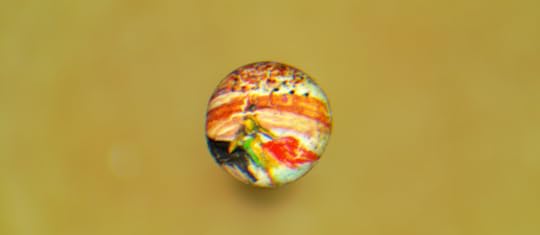
Source: COLOMBIA HAUL! Zuly Sanguino, Limbless Artist – Miniatures Painted on Pins – PLUS MORE!
Researchers at ASU Build a Jetpack to Make People Run Faster
Featured in Ripley's Believe It or Not!
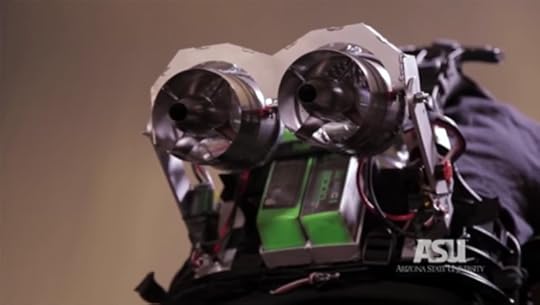
Researchers at Arizona State University created a jetpack that doesn’t fly. Instead, it straps onto a runner’s back and helps them run faster.
The idea behind the jetpack is that every soldier should be able to run a four-minute mile
Jason Kerestes came up with the idea for his 4MM (4 Minute Mile) project
The pack features two dual jet thrusters that face behind the runner to propel them forward
It generates continuous thrust to help runners move faster while reducing their metabolic energy expenditures
It was found to make runners faster, but because it was so heavy, any benefits were negated
MINI BION
“BIONs” – short for Believe It or Not – is the word we use at Ripley’s to refer to anything that is unbelievable and worthy to become part of Ripley’s lore and collection.
Source: Researchers at ASU Build a Jetpack to Make People Run Faster
Woodrow Wilson Used Sheep to Mow the White House Lawn
Featured in Ripley's Believe It or Not!
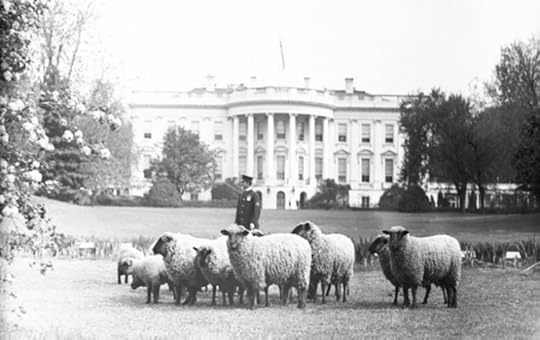
During WWI, President Woodrow Wilson got a flock of sheep to mow the White House lawn in an effort to save manpower.
At its peak, the flock comprised 48 sheep
They kept the lawn low and well fertilized
The sheep saved money by stopping the government from having to hire a lawn service
They also raised money for the Red Cross through an auction of their wool
MINI BION
“BIONs” – short for Believe It or Not – is the word we use at Ripley’s to refer to anything that is unbelievable and worthy to become part of Ripley’s lore and collection.
Source: Woodrow Wilson Used Sheep to Mow the White House Lawn
Ripley Entertainment Inc.'s Blog
- Ripley Entertainment Inc.'s profile
- 52 followers


